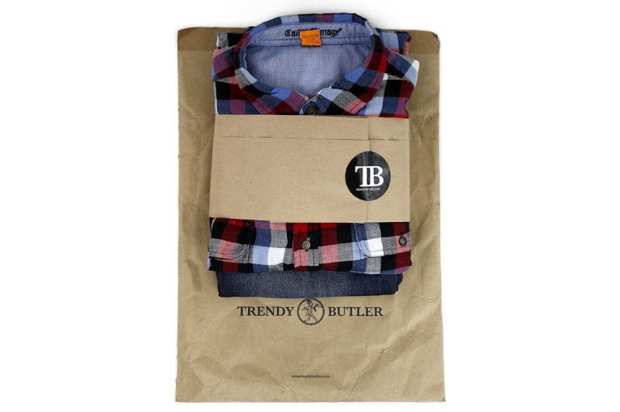How Trendy Butler Is Breaking Rules To Build A Better Subscription Box

Consumers signing up for any kind of subscription box these days knows the drill. They fill out a brief questionnaire establishing their stylistic preferences and fitting needs, and the algorithm does the rest. Generally, there is an element of machine learning over time; the longer the customer stays involved with the service, the more data the artificial intelligence gets about the items they accepted or rejected. The theoretical outcome is that with more input, the AI does better a job of matching customers to items they like – though, of course, some outcomes are better than others.
In many regards, Trendy Butler checks all of those boxes, with one pretty big difference. Directed at men who want to dress better – but perhaps don’t want to work all that hard at doing it – the service sends subscribers one box of clothing per month for $65, which contains a single outfit with a retail value of around $150.
But the big differentiator is that the opening questionnaire isn’t short at all – in fact, it is 200 questions long.
“Our technology will allow men to never have to shop again, yet interact with their wardrobe and carry themselves with confidence in any situation,” said CEO and Co-founder Ali Najafian.
But to make that happen and to truly alleviate shopping as a burden in customers’ lives, he noted, the machine needs enough data to make decisions. A quick questionnaire might be user-friendly on the front end, but that early speed comes at a cost. The odds are lower that the computer will get it right in early interactions, meaning the customer will spend more time returning items, which is arguably more onerous than answering extra questions in an online quiz.
Moreover, churn is an endemic problem in the subscription sales business, especially in apparel. According to the PYMNTS Subscription Commerce Index, voluntary churn happens for all kinds of reasons: the site is hard to navigate, the experience is choppy, the goods don’t meet the consumer’s needs or, critically, the sign-on and authentication process is too long and cumbersome, causing the consumer to bail out before finishing.
Trendy Butler, it seems, is violating a cardinal rule by asking customers to take extra time signing in.
But, according to Najafian, following one key rule to break another – and, arguably, a more important one – is not a good strategy, particularly in a world where all kinds of services are offering to send wardrobe elements in a box each month. If the clothes don’t match up to customers’ expectations out of the box, so to speak, they are quite likely to try again elsewhere. If it comes correct and relevant the first time, he noted, they tend to stay engaged.
Most reviewers have noted that Trendy Butler is a brand for the more fashion-forward male shopper. Their main customer acquisition channels are on social media, where enthusiast influencers offer monthly unboxing videos to show off their latest clothing hoard. And though it is a bit hard to imagine a customer who watches fashion unboxing videos on Instagram but who doesn’t like to shop for clothes, Trendy Butler’s most likely shopper isn’t necessarily looking to never shop again so much as they are looking to find inspiration to add a bit of flair to their wardrobe.
“By going out on a limb with your style preferences while signing up, you’ll get professionally selected items instead of searching for them on your own. When taken together, there’s almost no reason not to try something new,” one reviewer wrote, noting that the service had managed to dynamite him away from his “conservative” dressing habits, at least part of the time.
The service is also firmly committed to inspiring users to take more sartorial risks with a fairly open return policy – if the customer doesn’t like anything in the box, they can send it back free of charge.
The goal, according to Najafian, is for customers to make use of that policy as infrequently as possible, of course. Most brands try to achieve that by making it difficult or expensive to return items, he noted, almost always to their detriment. Instead, he said, the focus should be on preventing returns by making sure what’s in the box is something the customer wants to keep.
